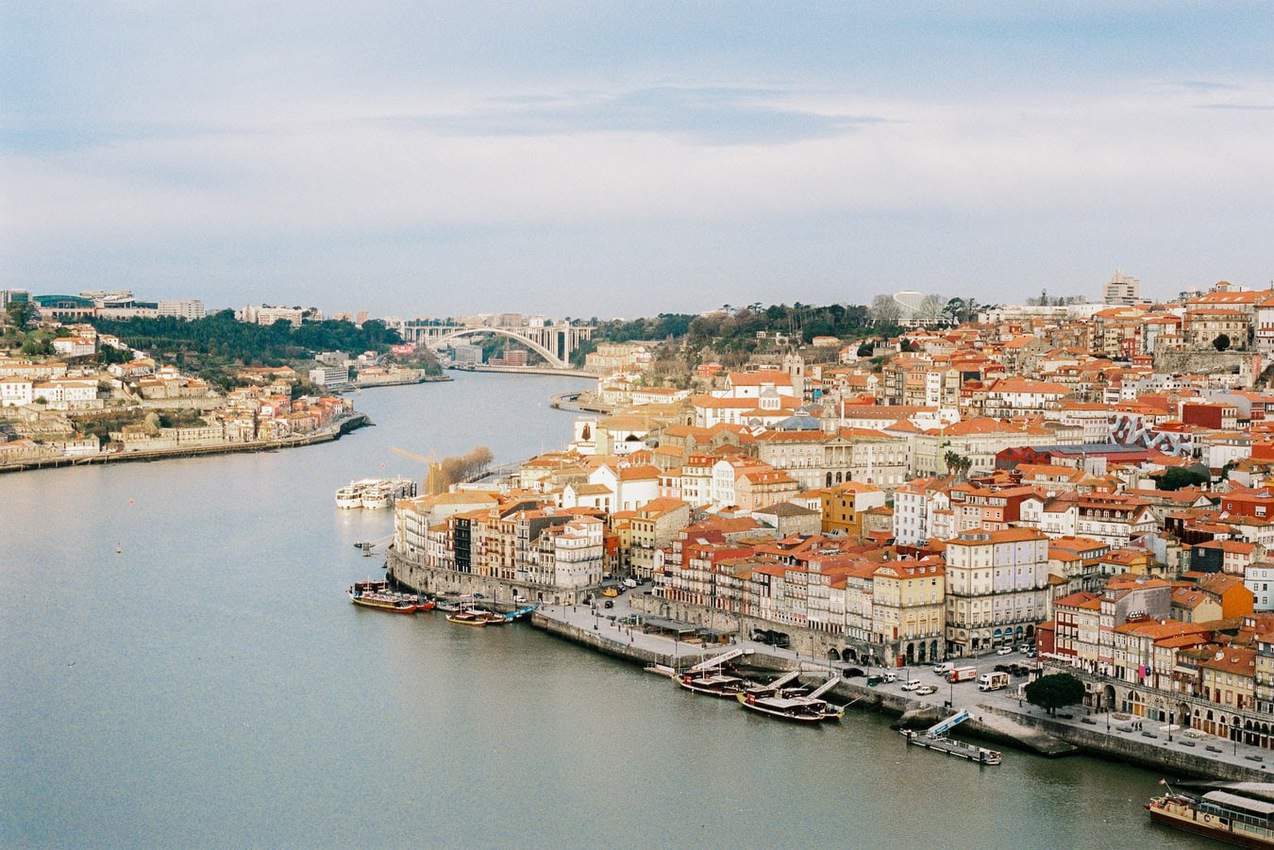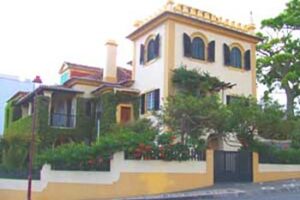
Combining a visit to Porto with a peek at Coimbra
By NR Venkatesh

Porto is a ‘happening’ place on the northern tip of Portugal, a convenient two-and-a-half-hour high-speed train ride from Lisbon. It is Portugal’s second largest city and the home, of course, of Port wine.
My wife and I took the Alfa Pendular train last October from the Santa Apolonia station in Lisbon’s Alfama district to Porto’s Campanha station.
However, we broke journey in Coimbra, snatching a few hours in Portugal’s campus town, a hidden gem of sorts.
Setting up an online account with (the bi-lingual) Portuguese Rail (Comboios de Portugal – www.cp.pt) was easy, secure and convenient. We were rewarded with substantial discounts for advance bookings.
Affordable Portugal
Given how affordable Portugal is, we chose to travel first class with free wi-fi access. Our journey from Lisbon to Coimbra took under two hours and the ticket collector asked to see our tickets, along with our Canadian passports, once during the train ride.
Alighting at Coimbra B station, we took a taxi to one end of the pedestrian-only Rua Ferreira Borges street looking for the Tourist Office situated at Av. Emídio Navarro 35.

Our aim was to try and fit in a quick tour of the city. Dragging our carry-on luggage, we hurried along the street taking in the old buildings, shops, restaurants, and general milieu.
A street singer with his chihuahua companion, perched on his shoulder, caught our eye.
We were impressed to see the four-legged companion contribute to the accordion music on offer by barking strategically (if not melodiously), as if on cue.
Hop-on-Hop-off Tour of Coimbra
We soon arrived at Largo da Portagem main square, situated within a stone’s throw from the banks of the Mondego river. The tourism office was located right by the square, it was empty and staffed by a friendly lady who spoke English.
We were delighted to learn that we were in time to take a 60-minute Yellow Bus Hop-on Hop-off tour (costing about 12 Euros per head), departing in an hour’s time, allowing us time for a quick goat-cheese sandwich.
We were permitted to leave our bags in the tourism office while we did the tour.
It was a mild and pleasant day and we enjoyed riding the open upper deck of the tour bus, as the driver showed us around Coimbra.
We used the disposable headphones to plug into the pre-recorded tour commentary. We drove past numerous gardens, cathedrals and other places of interest but the one that registered in our minds was the University of Coimbra campus, declared a UNESCO World Heritage Site in 2013.

Founded in 1290 in Lisbon, it was relocated to Coimbra in 1537. Considering Portugal as a potential rotating retirement destination, we also managed to confirm that short-term rentals in Coimbra are cheaper and plentiful during August each year when the university winds down for summer. You can check out facets of student life in Coimbra .

On to Porto
We were able to catch our connecting train to Porto around 3:30 pm, a slow intercity train arriving at Campanhã station around 6:30 pm. A five-minute ride on a local train got us to Porto’s famous Sao Bento station.
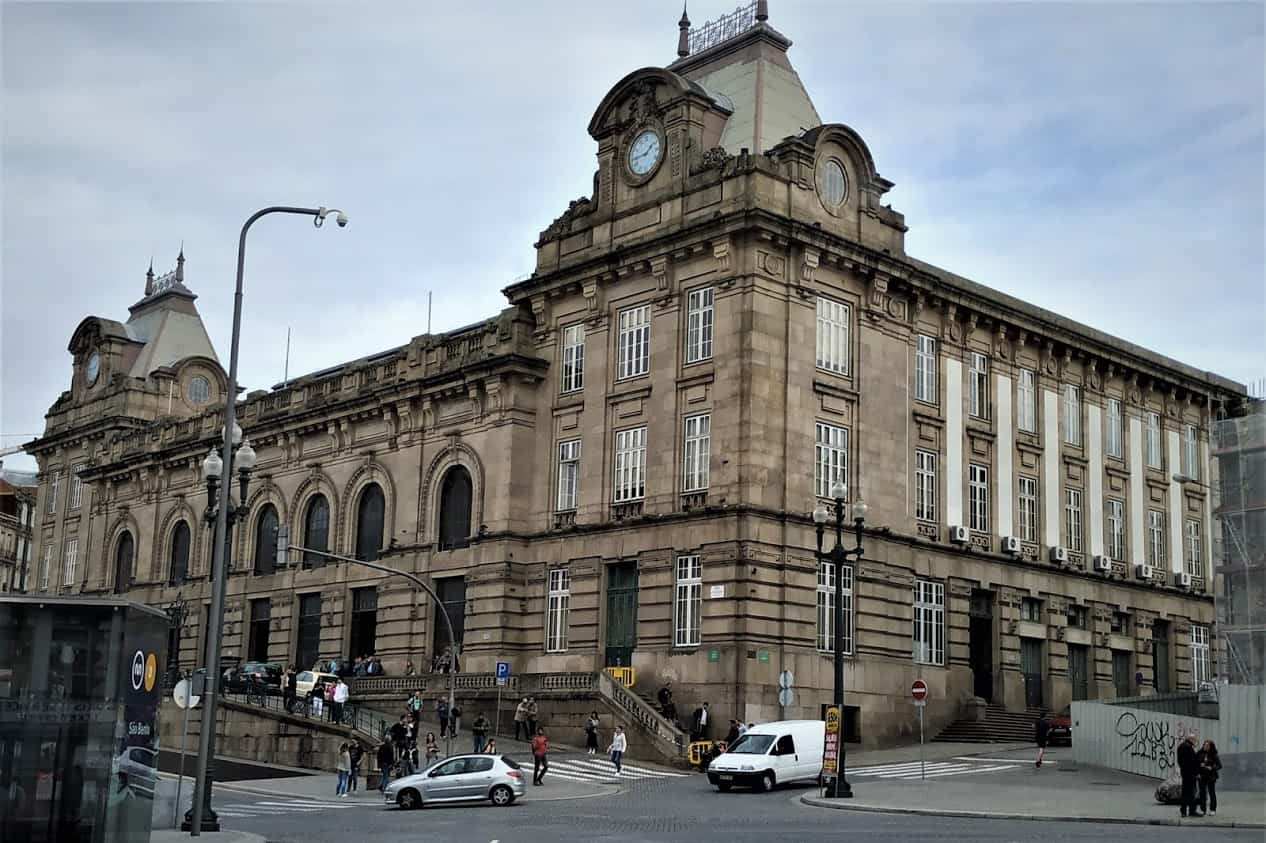
While the tiles inside the station walls immediately caught our attention, fatigue prevented us from lingering around.
A short cab ride later, we were at our highly rated Gallery Hostel in Porto (booked through Hostelworld.com) located at Rua Miguel Bombarda, 222.
The hostel merits special mention because it was a steal at about 70 Euros a night for a spacious private room.
We would highly recommend it because of its: central location with groceries and restaurants nearby; excellent upkeep and cleanliness; knowledgeable and friendly staff; spaciousness, spread out over a number of rooms on different levels including a business center, a tiny solarium, a bar-cum-art-gallery, and a huge kitchen.
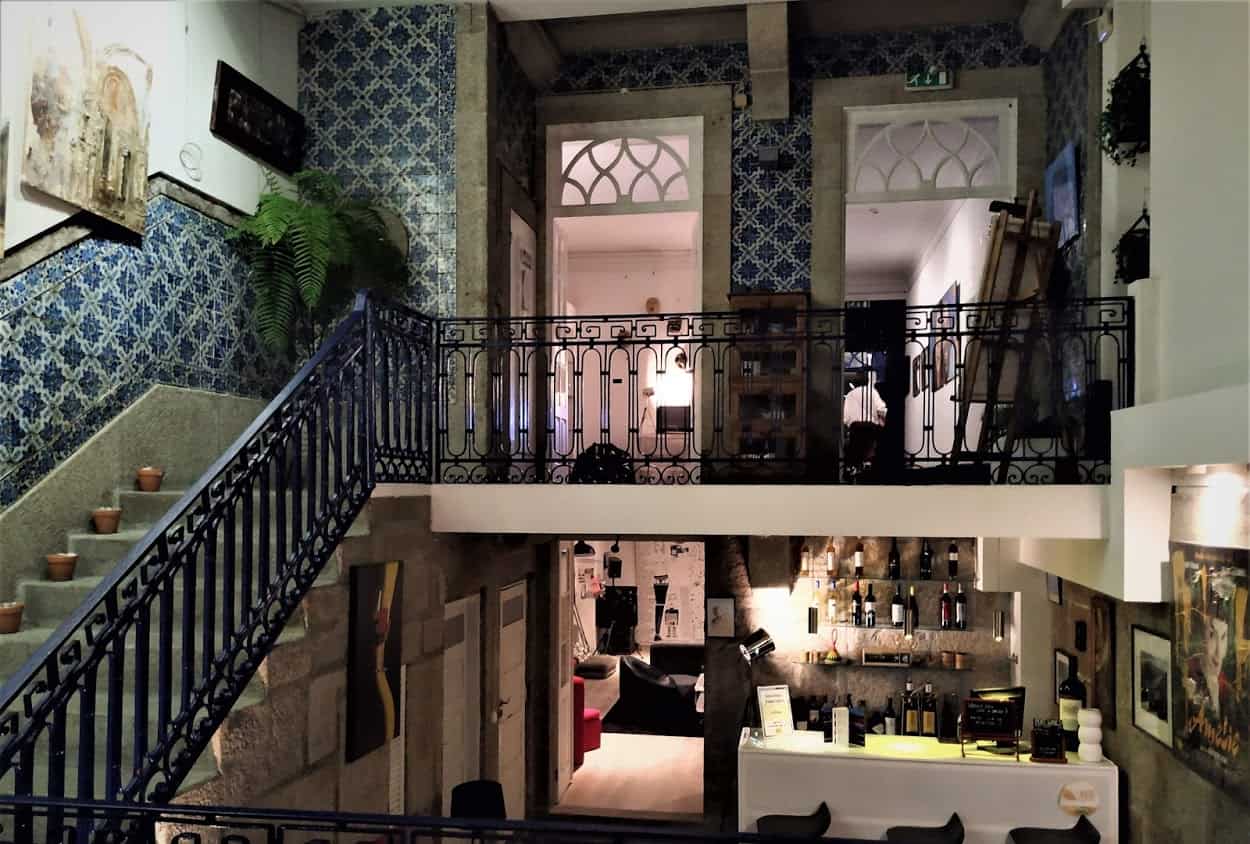
The complimentary buffet breakfast, though basic, had a variety of offerings and it was sumptuous and filling.
We spent three days in Porto including a weekend, exploring the city, whose touristy core runs along the Duoro River on the Porto side.
The Saturday evening that we visited, the place was packed with tourists being jostled along by the sheer kinetic energy of the place.
Buskers and Street Performers
You had a variety of buskers and street performers entertaining tourists for loose change. Couples busy taking selfies. And, older tourists, contemplatively (and/or contentedly) sipping popular local wines like Rosa Douro Red Wine.
We made it a point to walk from our hostel to the waterfront (an easy gentle decline) to take in the sights and sounds of the Ribeira, Porto’s quintessential neighborhood and a UNESCO World Heritage Site, to boot.
Walking by old taverns and traditional eateries offering dishes native to Porto like Tripas à Moda do Porto, a stew of vegetable, beans, sausage and the offals (innards) of different animals. Even though we were not bold enough to try the tripe, we tried the Francesinha, a generously-portioned open sandwich with layers of meat including smoked sausage, melted cheese, and spicy tomato sauce. A sandwich could feed an army!

The Duoro River
The Duoro river dissects the city into two densely-stacked hilltop dwellings, one being Porto and the other the city of Gaia. Many of the buildings crammed on the two steep hills are over a hundred years old.
Spanning the two hilltops are several bridges the most famous of which is the double-deck Dom Luís I metal arch bridge. Despite Porto and Gaia appearing small and compact, their hilly terrain makes covering them on foot physically demanding.
We used taxis freely and took City Sightseeing’s Hop-on Hop-off Porto Bus Tour (about $ 17 for single day 24-hour tickets) on both the red and blue routes.
The red route is longer and more scenic, covering 33 stops. Both routes take you on the famous Bridge and go by numerous cathedrals and squares.
Among the memorable cathedrals are Igreja das Carmelitas and Igreja do Carmo, two cathedrals situated next to each other and the Clerigos Tower and Church located nearby. Disposable headphones were available to enjoy the multi-lingual bus tour commentary.

The city of Gaia boats numerous wine lodges, their cellars stacked with wooden casks containing the world-famous Port wines, fortified with spirits for extended shelf-life.
This inhibits fermentation and enhances their sweetness.
You will come across English names like Taylor, Cockburn, and Sandeman underlining the British link to Port wine.
This arose out of the Brits’ dispute with the French, centuries back, leading to an embargo of French wine and the patronage of Portuguese wine.
If you have the time, we would strongly encourage you to visit the Duoro Valley, one of the most beautiful grape-growing and wine producing regions in the world, a 90-minute drive from Porto.
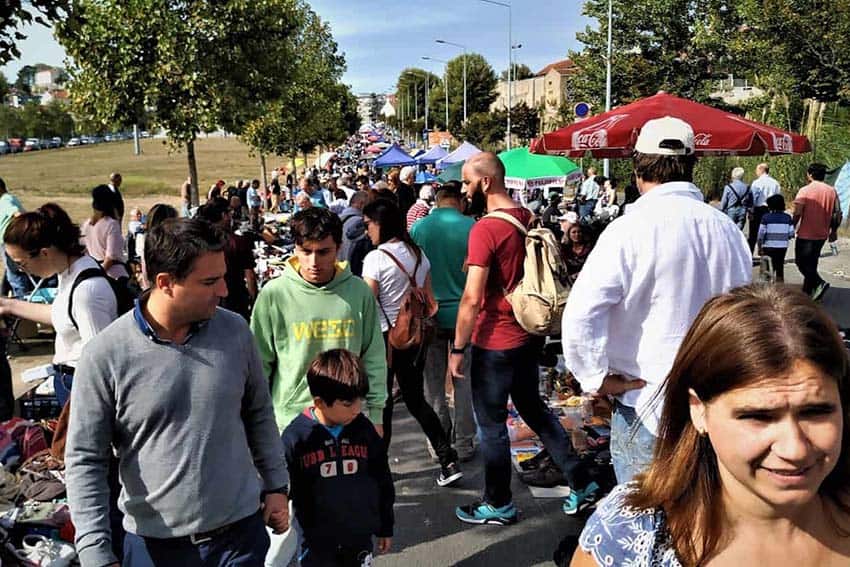
“My favorite things often have a story behind them and are usually handmade or discovered at a flea market.” – Amy Sedaris.
Flea Market
Amy might as well have been speaking for us. We had set aside both Saturday and Sunday to discover the local markets in and around Porto. We arrived at the Clerigos Outdoor
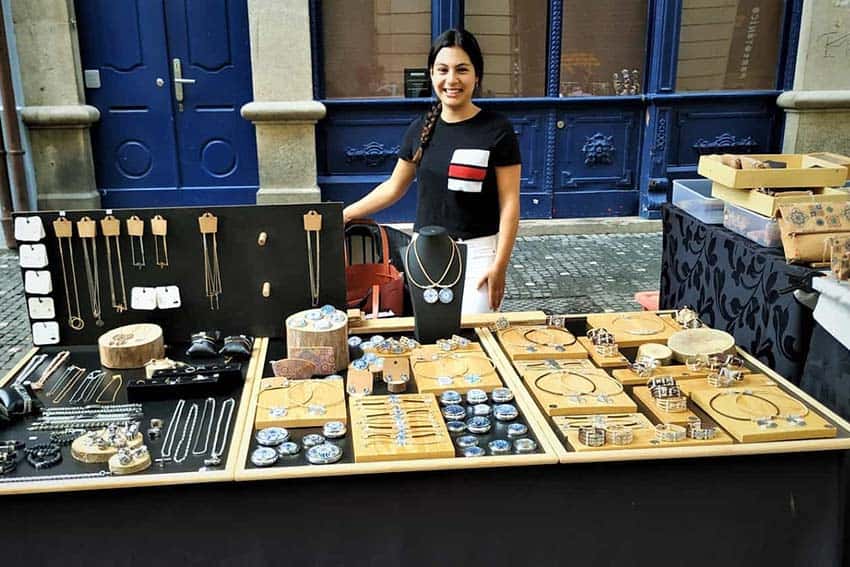
market located near Clérigos Tower and Church, around 9 am on Saturday, even as vendors were just setting up.
The market hosted about 50 vendors, some of whom sold jewelry and handicrafts, one who sold leather products likely made in China and other vendors selling trinkets, collectible and objects d’art.
The highlight of our visit to the market was meeting a vendor from Goa, in India, with his Portuguese wife. They had both retired as bankers.
He greeted us warmly, inquired if were Hindus (which, we proudly are) and advised us that he had several Hindu friends back in India.
We then took a bus, from outside Clerigos Church, to the Vandoma Flea Market (a 20-minute ride) at 25 de Abril Avenue (near Campanhã).
It is the largest flea market in Porto and it boasted several hundred vendors selling a jumble of merchandise.
Given that our storage lockers in Toronto and Buffalo, NY, are bursting at their seams, my joy today lies more in inspecting and admiring the items on offer than in bringing them home.
There were quite a few items that caught my eye including a dog-eared illustrated school text-book containing stories of the exploits of Portugal’s maritime heroes. Given the
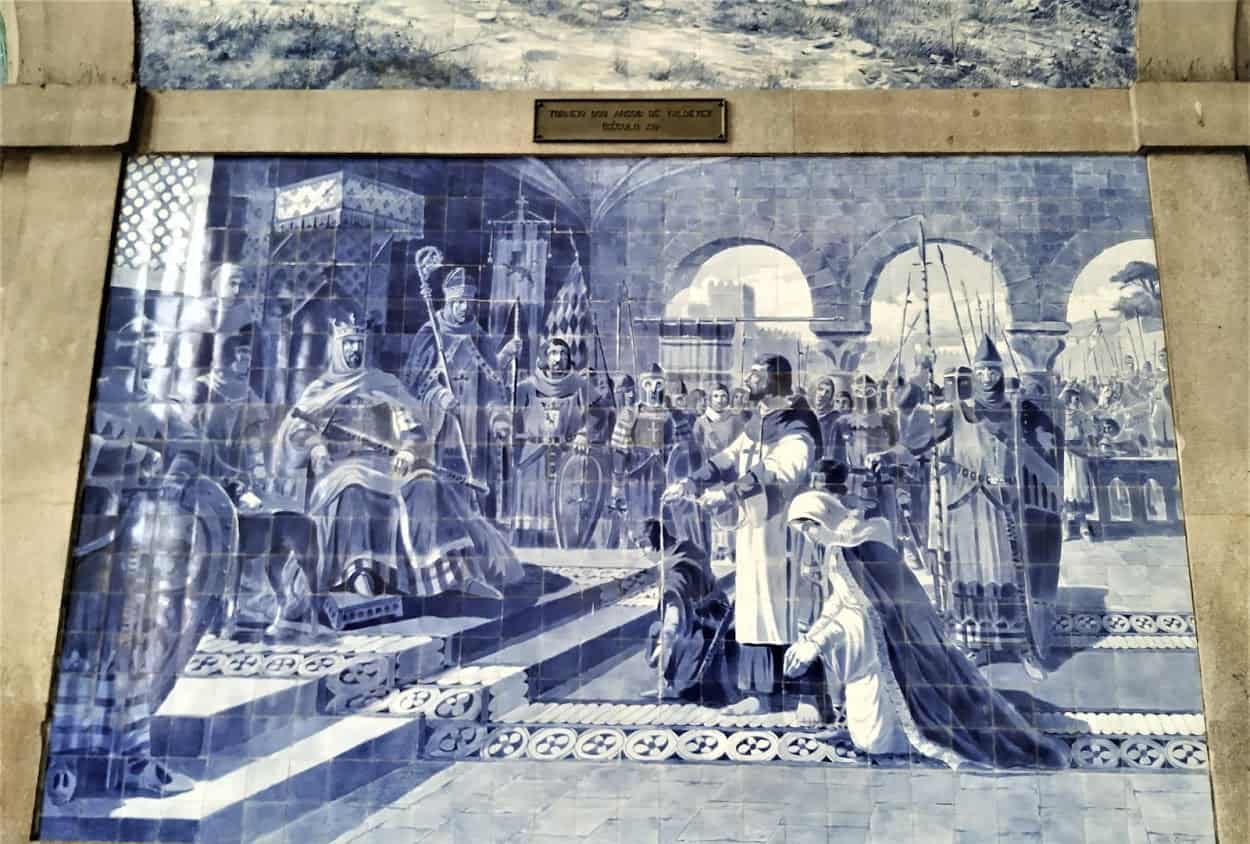
history buff in me, it was not easy resisting buying it. I bought five new leather belts for five Euros, though.
On our return to the hostel that evening, we came across Porto Belo market, a modest affair with vendors selling handicrafts, artisanal foods, organic fruits and vegetables, local honey, cheese and CDs and vinyl records.
We tasted some cheese, bought some organic black figs and I picked up a CD containing numbers rendered by Amália (Rodrigues), Portugal’s most famous fado singer, for 10 Euros.
Porto to Lisbon by Train
On our journey back from Porto to Lisbon, we allowed ourselves enough time to savor Sao Bento train station (built in 1900), considered one of the most beautiful stations in the world.
While the exterior of the building could pass off for a handsome structure in Paris, it is the interior of the station that attracts tourists.
The towering interior walls boast around 20,000 decorative tiles (mostly blue-and-white azulejo) that adorn the entrance lobby to the station.
Depicting images from a bygone era like soldiers on horseback charging into war or citizens paying their respects to the King. To scenes from everyday life in Portugal in the early 1900s, be it sailing on the Duoro river, farming, women picking fruit, etc.
It apparently took the painter, Jorge Colaço, a full 11 years (1905 to 1916) to painstakingly paint all the tiles. An awe-inspiring and monumental work of art that he has left behind for us to enjoy. Ironically, decorative tiles were introduced to Portugal by the conquering (Muslim) Moors from North Africa.
- Bombay from an Ex-pat Perspective - June 17, 2023
- Discovering Dearborn, Michigan - February 9, 2023
- Niagara Falls, Where Your Senses Come Alive! - August 6, 2022


